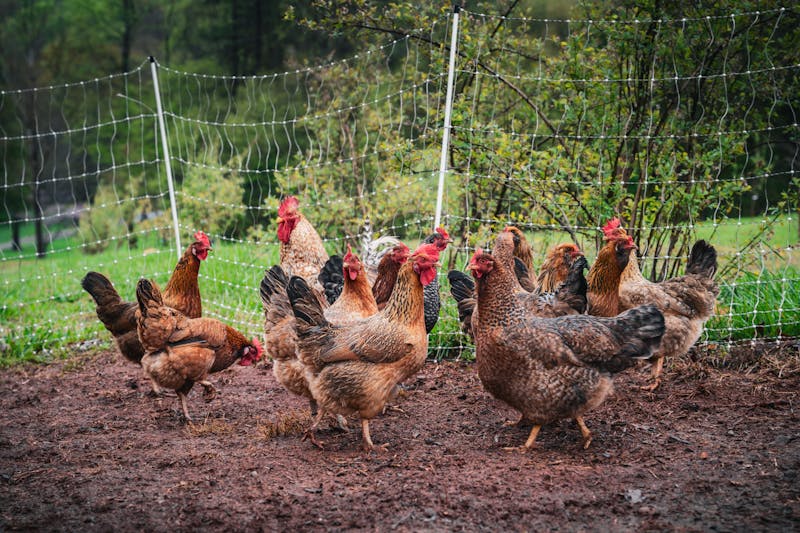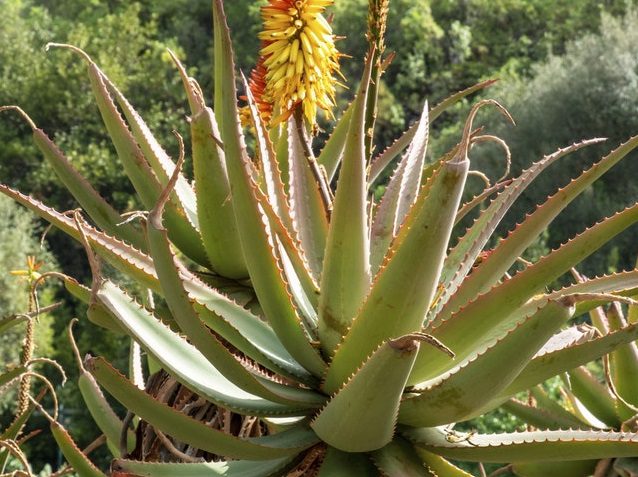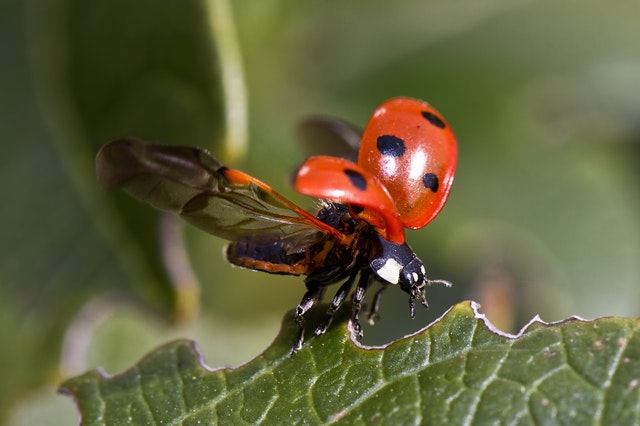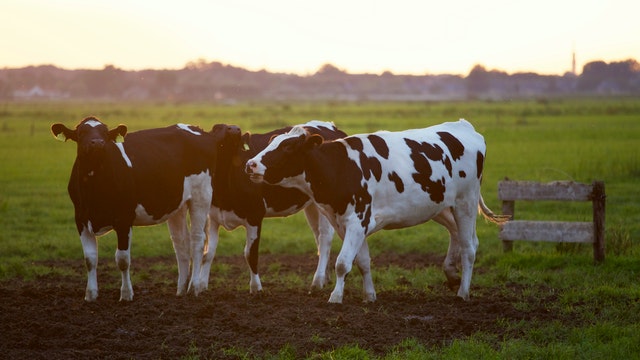Are you looking to start or expand your poultry farming business in Kenya?
There are different types of poultry farming you can do in Kenya like chicken, quails, turkey, ducks and guinea fowls farming. You can practice it all over the country in every county, any time of the year. Some do it under large scale, medium scale while majority do it under small scale production. Hybrid Layer Egg Production and Selling Fertilized Eggs are the most profitable models due to high revenue relative to costs. Broiler Meat Production and Improved Kienyeji Meat Production offer steady profits, with kienyeji being slightly more profitable. Brooding Day-Old Chicks can result in initial losses but may become profitable with a well-established customer base. Incubation and Hatching Services provide a consistent income opportunity with each batch, especially after recouping the initial investment. Selling Poultry Manure has minimal costs and offers a small but steady additional income stream.
This post will give you the latest facts and the most promising chicken farming models in the country with summaries for possible costs and profits.
Best Poultry Farming ideas in Kenya -2024
Facts about Poultry Farming in Kenya
Select data for Current Trends and Statistics for chicken Population production and consumption in Kenya
- 🐔 As of 2022 Kenya had about 58.6 million domestic birds, with 81% being indigenous chickens.The current poultry population is 4,187,154 broilers, 5,586,657 layers, 47,387,967 indigenous chickens, with the others being 1,444,330
- 🍗 Kenya’s poultry meat production has grown from 35,000 tonnes in 2019 to an estimated 38,000 tonnes per year in 2023, driven by increasing consumer demand for chicken meat. However, the per capita poultry meat consumption in Kenya stands at 0.65kg, which is way below the WHO requirement of 12kg.
- 🥚 The per capita egg consumption in Kenya has risen from 45 eggs per person per year in 2019 to an estimated 52 eggs per person per year in 2022, though this remains significantly lower than the WHO recommendation of 300 eggs per person per year.
How to estimate your costs and profits as a Poultry farmer.
How profitable is Poultry farming in Kenya?
| Profitability Model | Total Costs | Total Revenue | Possible Profits |
|---|---|---|---|
| Broiler Meat Production | $750 (KSH 112,500) | $1,000 (KSH 150,000) | $250 (KSH 37,500) |
| Improved Kienyeji Meat Production | $800 (KSH 120,000) | $1,200 (KSH 180,000) | $400 (KSH 60,000) |
| Hybrid Layer Egg Production | $740 (KSH 111,000) | $5,000 (KSH 750,000) | $4,260 (KSH 639,000) |
| Brooding Day-Old Chicks (3 weeks) | $400 (KSH 60,000) | $300 (KSH 45,000) | -$100 (KSH -15,000) |
| Brooding Day-Old Chicks (1 month) | $400 (KSH 60,000) | $500 (KSH 75,000) | $100 (KSH 15,000) |
| Selling Improved Kienyeji Fertilized Eggs | $1,500 (KSH 225,000) | $6,000 (KSH 900,000) | $4,500 (KSH 675,000) |
| Selling Poultry Manure | Minimal (Labor) | $50 (KSH 7,500) | $50 (KSH 7,500) |
| Incubation and Hatching Services | $900 (KSH 135,000) | $75 per batch (KSH 11,250) | $75 per batch (KSH 11,250) |
1. Poultry Farming for White Meat Production
One of the most common approaches to poultry farming is raising chickens for meat. Two popular choices are broilers and improved kienyeji chickens. Each type has its advantages and profitability potential.
Broilers Chicken Farming
Hybrid broilers chicken are a top choice for meat production due to their rapid growth. These birds can be ready for market in as little as six to eight weeks. Their fast growth cycle allows farmers to have multiple production cycles within a year, maximizing profit potential.
Read Next: How Profitable is Broilers Meat Chicken farming in Kenya?
- Costs:
- Purchase of 100 day-old broiler chicks: $150 (KSH 22,500)
- Feed (approximately 3 kg per bird over 3 months): $300 (KSH 45,000)
- Housing and equipment: $200 (KSH 30,000)
- Miscellaneous (vaccinations, labor): $100 (KSH 15,000)
- Total Costs: $750 (KSH 112,500)
- Revenue:
- Average selling price per bird: $10 (KSH 1,500)
- Total revenue from selling 100 birds: $1,000 (KSH 150,000)
- Profit: $250 (KSH 37,500)
Improved Kienyeji Chicken Farming
Multi purpose Improved kienyeji chicken breeds, such as Sasso and Kenbro, are becoming increasingly popular due to their resilience, better taste, and higher market prices. Although they take longer to mature than broilers, kienyeji chickens fetch a higher price per kilogram, and their demand is rising, especially in urban areas.
- Costs:
- Purchase of 100 day-old kienyeji chicks: $200 (KSH 30,000)
- Feed (approximately 3 kg per bird over 3 months): $300 (KSH 45,000)
- Housing and equipment: $200 (KSH 30,000)
- Miscellaneous (vaccinations, labor): $100 (KSH 15,000)
- Total Costs: $800 (KSH 120,000)
- Revenue:
- Average selling price per bird: $12 (KSH 1,800)
- Total revenue from selling 100 birds: $1,200 (KSH 180,000)
- Profit: $400 (KSH 60,000)
Conclusion on chicken Meat Production
While broilers offer quicker returns, improved kienyeji chickens provide higher profitability per bird. The choice between the two depends on your market and production capacity. Urban markets, in particular, have shown a preference for kienyeji due to the perception of higher quality and health benefits.
2. Poultry Farming for Egg Production
Egg production is another profitable venture within poultry farming, providing a consistent income stream. The primary focus here is on hybrid layers, bred specifically for high egg production for consumption. The other way is to sell
Hybrid Layers Egg Farming
Hybrid layers are bred for optimal egg production and can lay up to 300 eggs per year. They start laying at about 18-20 weeks and continue for around two years, making them an excellent choice for continuous income.
Read More: How Profitable is Hybrid Layers Egg Chicken Farming in Kenya?
- Costs:
- Purchase of 100 day-old hybrid layer chicks: $200 (KSH 30,000)
- Feed (approximately 2 kg per bird per month for 6 months): $240 (KSH 36,000)
- Housing and equipment: $200 (KSH 30,000)
- Miscellaneous (vaccinations, labor): $100 (KSH 15,000)
- Total Costs: $740 (KSH 111,000)
- Revenue:
- Average selling price per egg: $0.20 (KSH 30)
- Average production per bird: 250 eggs in 6 months
- Total revenue from 100 birds: 100 birds x 250 eggs x $0.20 = $5,000 (KSH 750,000)
- Profit: $4,260 (KSH 639,000)
Selling Kienyeji Chicken Fertilized Eggs
In regions with high demand for improved kienyeji chickens, selling fertilized eggs can be extremely profitable. Fertilized eggs are often sought after by farmers looking to start their flocks or hatcheries.
- Costs:
- Purchase of 100 hens for egg production: $800 (KSH 120,000)
- Feed (approximately 1 kg per bird per month for 6 months): $600 (KSH 90,000)
- Miscellaneous: $100 (KSH 15,000)
- Total Costs: $1,500 (KSH 225,000)
- Revenue:
- Average selling price per fertilized egg: $0.30 (KSH 45)
- Average production per hen: 200 eggs in 6 months
- Total revenue from 100 hens: 100 hens x 200 eggs x $0.30 = $6,000 (KSH 900,000)
- Profit: $4,500 (KSH 675,000)
Conclusion on Chicken Egg Production
Hybrid layers farming as well as selling fertilized eggs gives you higher profit margins due to the consistent demand for eggs. This model is particularly effective for farmers who prefer steady income over large, one-time profits from meat production.
Read Next: Is Improved Multipurpose Kienyeji chicken farming in Kenya Profitable?
3. Brooding and Reselling 1 Month 0ld Chicks
Brooding is focused on the intensive care of day-old chicks to ensure their survival and growth during the critical early weeks of life, while selling one-month-old chicks caters to farmers looking for healthier, more independent birds that require less immediate care.
Brooding Day-Old Chicks
Brooding refers to the management of chicks from day-old until they are about 6 weeks old. This stage is critical for the chicks’ growth and survival, as they require special care to ensure they thrive in their early life. The temperature must be carefully managed, starting at around 32-35°C (90-95°F) and gradually decreasing as the chicks grow
During brooding, chicks are vulnerable to diseases, so monitoring their health and behavior is crucial. The brooding area must be clean, dry, and well-ventilated. Bedding material is used to keep the chicks comfortable, and their feeding and watering needs must be met consistently
- Costs:
- Purchase of 100 day-old chicks: $150 (KSH 22,500)
- Feed (approximately 1 kg per bird for 3 weeks): $50 (KSH 7,500)
- Brooding equipment (heat lamps, bedding): $150 (KSH 22,500)
- Miscellaneous: $50 (KSH 7,500)
- Total Costs: $400 (KSH 60,000)
- Revenue:
- Selling price per chick at 3 weeks: $3 (KSH 450)
- Total revenue from selling 100 chicks: $300 (KSH 45,000)
- Profit: -$100 (KSH -15,000) (This initial loss can be offset by establishing a reliable customer base for future sales.)
Selling 1 Month-Old Chicks
Selling one-month-old chicks involves providing chicks that have been brooded and are now more independent. At this stage, the chicks are generally healthier, more robust, and capable of sustaining themselves with less intensive care.
Most Layers chicken farmers prefer purchasing one-month-old chicks because they are less labor-intensive to care for than day-old chicks, which require constant monitoring and heat. Buyers often look for chicks that are vaccinated and healthy, ready to be integrated into their own flocks
- Costs:
- Purchase of 100 day-old chicks: $150 (KSH 22,500)
- Feed (approximately 2 kg per bird for 1 month): $200 (KSH 30,000)
- Miscellaneous: $50 (KSH 7,500)
- Total Costs: $400 (KSH 60,000)
- Revenue:
- Selling price per month-old chick: $5 (KSH 750)
- Total revenue from selling 100 chicks: $500 (KSH 75,000)
- Profit: $100 (KSH 15,000)
Conclusion on Brooding and Reselling
Although the initial costs may seem high, this model builds customer trust and offers the potential for long-term profitability as you become known for providing healthy, well-cared-for chicks.
4. Selling Value-Added Poultry Products
In addition to selling meat and eggs, poultry farming can be further diversified by offering value-added products or by products such as organic manure and feathers
Selling Poultry Manure
Organic manure is in increasing demand due to the push for sustainable organic farming practices. Poultry manure is rich in nutrients and can be sold to farmers or gardeners.
- Costs: Minimal, primarily labor for collection.
- Revenue:
- Selling price per bag of manure: $5 (KSH 750)
- Total revenue from 100 birds (approximately 10 bags): $50 (KSH 7,500)
- Profit: $50 (KSH 7,500)
Conclusion on Value-Added Products: and manure offers high-profit margins with relatively low additional costs. These products allow you to diversify your income streams and maximize profitability.
5. Incubation and Hatching Services
For those with the right equipment, providing incubation and hatching services can be a profitable venture. This model involves hatching chicks from fertilized eggs and selling them as day-old chicks or providing incubation services to other farmers.
Investing in a solar incubator allows you to hatch eggs either for your flock or for sale cheaply. This service is highly sought after by farmers who prefer not to invest in their incubators or those who produce fertilized eggs but lack hatching facilities.
- Costs:
- Incubator (500-egg capacity): $800 (KSH 120,000)
- Electricity and maintenance: $100 (KSH 15,000)
- Total Costs: $900 (KSH 135,000)
- Revenue:
- Incubation service fee per egg: $0.20 (KSH 30)
- Hatching rate: 75%
- Total revenue per 500 eggs: 500 eggs x 0.75 x $0.20 = $75 (KSH 11,250)
- Profit per batch (after recouping incubator costs): $75 (KSH 11,250)
This agribusiness model requires an upfront investment in equipment, but it can be highly profitable if you consistently provide reliable hatching services. Partnering with local farmers who produce fertilized eggs but lack incubators can be a stable source of income.
Challenges Faced by the Poultry Farmers in Kenya
- Poor supply of quality breeders and few sources of indigenous chicken breeding stock.
- High cost and low quality of commercial chicken feed, with 70% of raw materials being imported.
- Poor accessibility of quality poultry inputs and services.
- High incidences of poultry pests and diseases.
- Weak poultry producer and trader organizations and associations.
- Competition from imports for those dealing in broilers and layers
How to Succeed in Poultry farming in Kenya
If you’re considering entering or expanding your operations in the poultry farming sector, the following are some essential steps to get started and stay profitable. You will need to follow good agriculture practices to get high profits. It involves proper chicken houses, vaccination and strict feeding program like one by Kenchic poultry farm.
- Conduct Market Research: Understand the demand for poultry products in your area. Identify your target customers and their preferences.
- Create a Business Plan: Outline your goals, budget, and strategies. Include details on financing, location, and infrastructure.
- Choose the Right Location: Select a suitable site for your farm, considering factors like accessibility, availability of clean water, and proximity to markets.
- Invest in Quality Chicks: Source your chicks from reputable chick sellers to ensure healthy stock.
- Focus on Nutrition and Health: Provide balanced chicken feed and implement a vaccination program to maintain the health of your flock.
- Record Keeping: Maintain accurate records of your expenses, sales, and production to monitor your farm’s performance.
- Marketing and Sales: Develop a marketing strategy to promote your products and reach potential buyers.
Conclusion
Poultry farming in Kenya offers various profitable models, each with its unique advantages and challenges. Whether you’re interested in meat production, egg production, brooding, or selling value-added products, there’s a model to suit your resources, skills, and market demands.
- For Quick Returns: Broiler production is your best bet due to its short cycle and high demand.
- For Steady Income: Hybrid layers offer consistent income through egg production.
- For Niche Markets: Consider brooding and reselling chicks or offering incubation services.
Successful poultry farming requires careful planning, proper management, and an understanding of your market. By selecting the right model and diligently managing costs, you can achieve significant profitability in this versatile and rewarding sector.
Resources
Poultry Value Chain in Two Medium-Sized Cities in Kenya; Insights From Cluster Theory




Thanks Abdi, Kindly contact us with the specific advice you would wish from us,
Regards